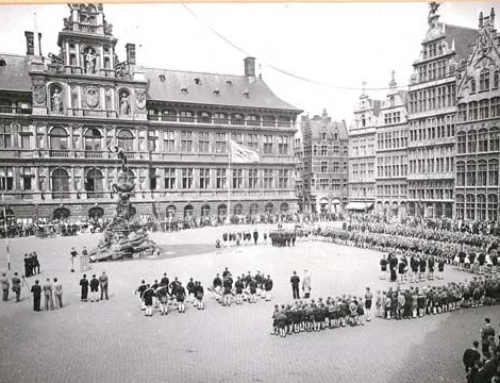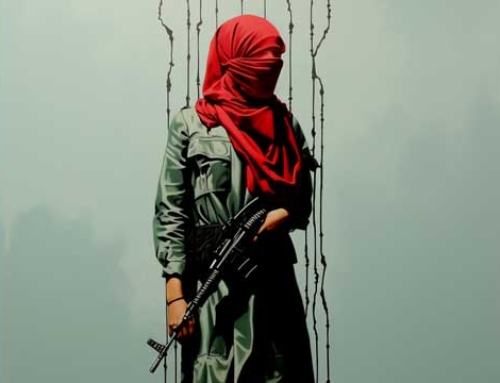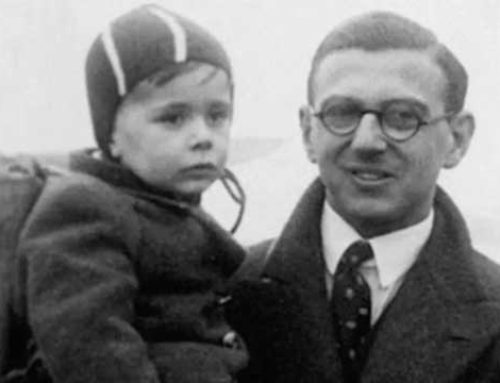In November 1947, the United Nations made a pivotal decision that would significantly change the future of the Middle East. Through Resolution 181, the UN voted for the establishment of an independent Jewish state alongside an independent Arab state in the British Mandate territory of Palestine.
This historic moment was joyously received by many Jews worldwide, seen as a promise for a safe haven after the horrors of the Holocaust. However, the reaction in the Arab world was significantly different; many saw it as an unjust interference in Arab countries and a threat to the Palestinians in the area.
The resolution led to an immediate escalation of tensions between Jewish and Arab communities in the region, culminating in the Arab-Israeli War of 1948, shortly after Israel declared its independence.
For Jewish communities in Arab and Islamic countries, this decision marked the beginning of a period of increasing uncertainty and often hostility. In countries like Iraq, Egypt, Yemen, and Morocco, where Jewish communities had long been an integrated part of society, this period led to a wave of anti-Jewish agitation, legislation disadvantaging Jews, and direct persecution.
850,000 Jewish Refugees
The number of Jews living in Arab countries and migrating or fleeing to Israel in the years immediately following 1948 is remarkable. Estimates suggest that between 1948 and the mid-70s, about 850,000 Jews left the Arab world, many of them heading to the newly founded state of Israel. This number is significant, given that the Jewish population in Israel in 1948 was about 650,000. This mass migration transformed the demographics of the Middle East and had a profound impact on Israel’s cultural composition.
Sources:
United Nations. “Resolution 181 (II). Future government of Palestine.” 1947. United Nations website
Jewish Virtual Library. “Jewish Refugees from Arab Countries.” Jewish Virtual Library website
Stillman, Norman A. “The Jews of Arab Lands in Modern Times.” Philadelphia: Jewish Publication Society, 1991.
Before the dramatic geopolitical shifts of 1947 and the establishment of the state of Israel, Jewish communities had a long and often prosperous history in various Arab and Islamic countries. Their contributions to society, culture, and the economy of these countries were significant and diverse, ranging from trade and science to art and literature.
Lifestyles and Contributions
In Egypt, for instance, Jewish communities were actively involved in the economic life, particularly in the cotton trade, which was a crucial sector of the Egyptian economy. In Iraq, Jews were prominent members of society, involved in trade, finance, and as craftsmen. Jewish musicians had a profound influence on the development of Iraqi music. In Morocco, Jews contributed to the economy as traders and craftsmen and enriched the cultural tapestry with their unique traditions.
Statistics and Facts
Before the massive migration to Israel and other countries, significant Jewish communities lived in these Arab countries:
- Egypt: The Jewish population of Egypt was about 75,000 in the late 1940s.
- Iraq: Iraq housed one of the oldest and most historic Jewish communities in the world, with about 150,000 Jews before the mass migration began.
- Morocco: Morocco had the largest Jewish community in the Arab world, with an estimated 250,000 to 300,000 Jews before their emigration.
- Yemen: It is estimated that there were about 55,000 Jews in Yemen before Operation Magic Carpet, which brought most of them to Israel.
- Syria: Before the wave of emigration, the Jewish community in Syria numbered about 30,000 souls.
These communities were not monolithic blocks but consisted of diverse groups with their own cultural, social, and religious traditions, significantly contributing to the plurality of their respective societies.
Sources:
“Jewish Refugees from Arab Countries” by the Jewish Virtual Library provides a comprehensive overview of Jewish populations in Arab countries and their migration patterns. Jewish Virtual Library website
“The Jews of Arab Lands: A History and Source Book” by Norman A. Stillman provides in-depth insights into the lives and contributions of Jewish communities in Arab countries. Philadelphia: Jewish Publication Society, 1979.
The adoption of the UN resolution in November 1947, advocating for the creation of a Jewish state, had immediate and far-reaching consequences for Jewish communities in the Arab world. This section examines the direct impact of the UN resolution on these communities, focusing on anti-Jewish riots, discriminatory legislation and policy that followed, as well as specific examples of anti-Jewish agitation in countries like Egypt, Iraq, and Yemen.
Immediate Consequences of the UN Resolution
The announcement of the UN resolution almost immediately led to violent reactions in various Arab countries. Anti-Jewish sentiments, already present in the background, were amplified and resulted in open violence against Jewish communities. This period of unrest manifested in both spontaneous riots and more organized forms of agitation, often incited by nationalist and Islamist groups seeing the establishment of a Jewish state as a direct threat.
Anti-Jewish Riots, Legislation, and Policy
- Egypt: In the aftermath of the UN resolution, the Egyptian government took measures that significantly limited the rights of Jewish citizens. Anti-Jewish riots in 1948 and 1952 led to the death and injury of many and the destruction of Jewish property.
- Iraq: The most notorious violent outbreak occurred during the Farhud in 1941, a pogrom against the Jewish population of Baghdad. Although the Farhud occurred in 1941, before the UN resolution, events immediately following the 1947 resolution and the period thereafter led to an intensification of anti-Jewish sentiments. This resulted in increasing marginalization and more violence against Jews.
- Yemen: In Yemen, reactions to the UN resolution led to increased pressure on Jewish communities, including violent attacks and coercion to flee.
Sources:
“The Farhud: Roots of the Arab-Nazi Alliance in the Holocaust” by Edwin Black provides a detailed account of the Farhud and explains the historical context of anti-Jewish sentiments in Iraq. Discover this book here.
“The Jews of Egypt: From Rameses II to Emperor Hadrian” by Joel Beinin offers insight into the long history of Jewish communities in Egypt and the impact of 20th-century political changes on these communities. Discover the book here.
Deep Personal Tragedies
The mass exodus of Jewish communities from Arab countries in the period following the UN resolution and the establishment of the state of Israel is not just a story of geopolitical and social changes but also of deep personal tragedy and loss. This section highlights the personal experiences of Jewish families forced to leave their homes, lives, and heritage under the threat of violence, discrimination, and political instability.
Personal Stories and Testimonies
Many Jews in Arab countries faced the heart-wrenching decision to leave in response to increasing hostility and insecurity. This decision was often rushed and under extreme pressure, leaving families little time to ponder their lives or take valuable possessions with them. Testimonies from this period reveal stories of fear, uncertainty, and the sorrow of leaving behind a life full of memories.
Difficulties and Challenges in Leaving Their Country
The Jewish communities that decided to leave faced numerous challenges, including:
- Confiscation of Property: Many reported that their properties, including homes, businesses, and other valuable assets, were seized by the state or had to be left behind.
- Restrictions on Emigration: The ability to emigrate was often limited by local legislation, making it difficult to officially obtain permission to leave the country. Many had to resort to smuggling routes or false documents to escape.
- Loss of Citizenship: In some cases, Jewish citizens were stripped of their nationality, rendering them stateless and losing their right to return or claim property.
Sources:
Interviews and testimonies collected in “The Forgotten Refugees”, a documentary shedding light on the stories of Jewish refugees from Arab countries, offer a poignant look at the personal consequences of these historical upheavals. These stories underscore the human cost of political conflict and the resilience of individuals faced with the loss of their home and community.
The stories of departure from Arab countries illuminate an often-overlooked chapter in Jewish history. They provide an essential perspective on the complexity of Jewish-Arab relations and the lasting impact of the creation of Israel on individual lives. These personal testimonies serve as a powerful reminder of the need for understanding, dialogue, and healing between communities.
Mass Migration
The mass migration of Jewish communities from Arab countries to Israel, especially in the years immediately following the creation of the state in 1948, marked a unique and challenging period in Israel’s history. This section highlights the journey, arrival, and integration process of these immigrants, as well as the challenges they faced in building a new life in a young nation.
Arrival in Israel
The journey to Israel was for many Jewish immigrants from Arab countries both a liberation and a trial. One of the most notable operations to assist Jews in emigrating was Operation Magic Carpet (1949-1950), which flew Yemenite Jews to Israel. This operation, facilitated by the Israeli government and American Jewish organizations, is often cited as a successful example of efforts to rescue endangered Jewish communities.
Upon arrival in Israel, many immigrants were housed in transit camps, known as ‘ma’abarot’, which were often overcrowded and underfunded. Despite the challenging conditions, these camps formed a crucial first step in the integration process.
Integration Challenges
Once in Israel, newcomers faced significant challenges in integrating into Israeli society. Sephardic and Mizrahi (Eastern Jewish) immigrants often encountered cultural and socio-economic barriers, partly due to the dominant Ashkenazi (European Jewish) culture in the early years of the Israeli state. These differences led to tensions and a sense of marginalization among many Mizrahi Jews.
Building a New Life
Despite these challenges, Mizrahi Jews played an essential role in the building of the state of Israel. They contributed to the economic development, military, culture, and politics of the country. The integration of Mizrahi Jews into Israeli society is an ongoing process, which has evolved over the years with the establishment of political movements, cultural initiatives, and educational programs aimed at celebrating and preserving their unique heritage.
Sources
“Operation Magic Carpet” on the Jewish Virtual Library website offers an in-depth look at the historic airlift that brought Yemenite Jews to Israel. Jewish Virtual Library
“Sephardi and Mizrahi Jews in Israel” by the Myers-JDC-Brookdale Institute examines the socio-economic status of Sephardic and Mizrahi Jews in Israel and offers insights into their integration process. Myers-JDC-Brookdale Institute
These sources highlight the complexity of the experiences of Jewish immigrants from Arab countries and their significant contribution to the State of Israel, despite the initial challenges of integration.
Jewish Cultural Heritage
The mass exodus of Jewish communities from Arab countries after 1947 meant not only a physical departure from their homeland but also a loss of a rich and diverse cultural heritage that had existed for centuries. This part of the article highlights the cultural and historical treasures that Jewish communities left behind and the efforts being made to preserve and celebrate this heritage within Israeli society.
The Loss of Cultural Heritage
Jewish communities in Arab countries contributed to a rich cultural mosaic through their unique traditions, languages (such as Judeo-Arabic and Judeo-Spanish), religious practices, literature, music, and culinary habits. Many of these cultural expressions were the result of a symbiotic relationship with their Muslim and Christian neighbors, leading to a unique cultural synthesis that was characteristic of the region.
Upon their arrival in Israel, many of these traditions and cultural practices were challenged by the need to adapt to a new societal reality, often dominated by Ashkenazi culture. This led to a gradual erosion of some aspects of their heritage.
Efforts for Preservation and Commemoration
Despite these challenges, various organizations and individuals have committed themselves to preserving and celebrating the cultural heritage of Jewish communities from the Middle East and North Africa.
The Ben-Zvi Institute has conducted extensive research on the history and culture of these communities and works on projects aimed at preserving their cultural heritage. This includes digitizing historical documents, recording testimonies, and organizing cultural events that keep these traditions alive.
The World Jewish Congress has launched initiatives such as documenting Jewish heritage sites in the Middle East and promoting education about the history and contributions of Mizrahi Jews. Their work underscores the need to recognize these cultural treasures as an integral part of global Jewish heritage.
Sources
The Ben-Zvi Institute publishes works and organizes events focused on preserving the cultural heritage of Jews from the Middle East and North Africa. More information can be found on their website.
The World Jewish Congress has published several reports and articles on Jewish cultural heritage in the Middle East, available on their website.
The efforts to preserve and celebrate the cultural heritage of Jewish communities from Arab countries are crucial, not only as a means of remembering their history but also of recognizing the rich diversity of Jewish culture globally. These initiatives offer a window into a past that bears witness to coexistence and cultural exchange and serve as an important bridge for dialogue and understanding between different communities inside and outside Israel.
Conclusion
The exodus of Jewish communities from Arab and Islamic countries between 1947 and the subsequent years marks a significant chapter in the history of the Middle East, often overlooked in discussions about the refugee issue that followed the establishment of the state of Israel.
This mass migration had not only a lasting impact on the Jewish communities that had to leave their centuries-old homes but also on the societies they left behind. The loss of these communities meant the removal of a cultural fabric that had been part of the Middle East for generations.
The importance of remembering and acknowledging this history cannot be underestimated. It provides essential context for understanding the complexities of the Middle East conflict and highlights the need for a comprehensive approach to addressing regional issues. The integration of Jewish refugees from Arab countries into Israel, although initially met with challenges, has ultimately become an example of how a nation can work towards building an inclusive society that embraces the diverse cultural backgrounds of its citizens.
This part of Jewish history, often forgotten when considering issues surrounding refugees after the establishment of the state of Israel, underscores the complexity of the refugee experience and the resilience of communities faced with the necessity of building a new life. The integration of these refugees into Israel, though not without its challenges, has become a long-term success story, contributing to the country’s economic development, cultural diversity, and social fabric.
Source List
A comprehensive list of sources consulted for this article, including books, articles, interviews, and documentaries, will provide readers with further reading opportunities and insight into the thorough research basis behind the presented facts. These sources include, among others:
“Jewish Refugees from Arab Countries” from the Jewish Virtual Library.
“The Forgotten Refugees”, a documentary highlighting personal stories of Jewish refugees.
“The Farhud” by Edwin Black, about the pogroms in Iraq.
“Jews of Egypt” by Joel Beinin, examining the history of Jewish communities in Egypt.
“Operation Magic Carpet” from the Jewish Virtual Library, about the airlift that brought Yemenite Jews to Israel.
Publications from the Ben-Zvi Institute and the World Jewish Congress on preserving the cultural heritage of Jewish communities from the Middle East and North Africa.
Recognizing and remembering this history is crucial not only for the Jewish community but also provides important lessons on humanity, resilience, and the power of cultural integration in the face of unimaginable challenges.







